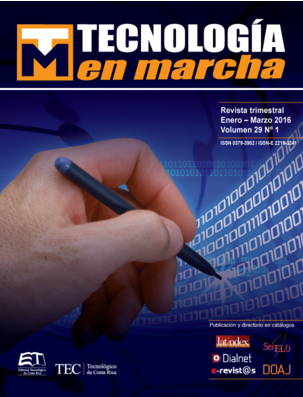Characterization of defects and nanoestructural alterations in the Nimonic 80A superalloy by using Transmission Electron Microscopy
Main Article Content
Abstract
In this work, TEM (Transmission Electron Microscope) samples of materials used in aeronautic applications were analyze. The main objective of this project was to study intercrystalline defects in Nimonic 80A superalloy after the heat treatment and fatigue testing of the samples. The samples were prepared for the TEM analysis in University of Siegen, Germany after they were test in very high cyclic loading conditions (1000 Hz y 20 000 Hz). These tests were performed because they simulate very closely the work conditions that these alloys must support in turbine and others aeronautic applications. The mechanical stresses generated in these kind of applications will develop many deformations and nanometric defects in this material. They are evidenced by the dislocations formation. The dislocations are possible to observe only by using very powerful microscopy technics such as Transmission Electron Microscope. The results obtained by the TEM analysis show that after the heat treatment, the samples developed very distinctive precipitations in the Nimonic 80A samples. Additionally, after the mechanical testing these samples shows the formation of representative kind of dislocations. Finally, this work shows the influence of the precipitations under the formations, stacking and movement of the dislocations in the microstructure of the tested samples.
Article Details
Los autores conservan los derechos de autor y ceden a la revista el derecho de la primera publicación y pueda editarlo, reproducirlo, distribuirlo, exhibirlo y comunicarlo en el país y en el extranjero mediante medios impresos y electrónicos. Asimismo, asumen el compromiso sobre cualquier litigio o reclamación relacionada con derechos de propiedad intelectual, exonerando de responsabilidad a la Editorial Tecnológica de Costa Rica. Además, se establece que los autores pueden realizar otros acuerdos contractuales independientes y adicionales para la distribución no exclusiva de la versión del artículo publicado en esta revista (p. ej., incluirlo en un repositorio institucional o publicarlo en un libro) siempre que indiquen claramente que el trabajo se publicó por primera vez en esta revista.

